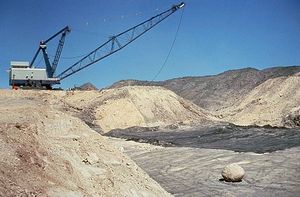Environmental Degradation
Description
The natural environment; including but not limited to soil, water, air, flora, and fauna, is something that have a natural balance. Through pollution, over usage, environmental impact ignorance and lack of stewardship, the balance is broken causing the living and non-living networks that sustain life on this planet to suffer.
How it Works
With a growing population the needs to resources are rising, but in 1st world countries the amount of resources a single person can consume significantly out weighs the amount of resources a person living in the third world would. However, this is only part of a larger problem. The environment has also taken second place to human progress and when we really started to make "progress" our relationship with nature has been more of a conquest than of stewardship. When the depletion of resources cannot be replenished naturally we found ways to put a band-aid on the solution, chemistry. This has led to all sorts of problems, not that chemistry is bad, but chemicals like DDT, incidents like Bhopal remind us that we must remain vigilant. Our philosophy and paradigms when it comes to preserving the environment, respecting something that is shared by everything living on the planet will not change over night but we are starting to get there, we are exploring other sources of energy, our grasp of science is strong enough to understand our path and where, why, and who is taking us there.
Evidence
“Conservation is getting nowhere because it is incompatible with our Abrahamic concept of land. We abuse land because we regard it as a commodity belonging to us. When we see land as a community to which we belong, we may begin to use it with love and respect.”
- Aldo Leopold
A study from the University of Oregon found that in certain zones, areas that were clear cut had nearly three times the amount of erosion due to slides. When the roads required by the clearcutting were factored in, the increase in slide activity appeared to be about 5 times greater compared to nearby forested areas. The roads built for clearcutting interrupt normal surface drainage because the roads are not as permeable as the normal ground cover. The roads also change subsurface water movement due to the redistribution of soil and rock.
Links
References
Swanson, F.J.; Dyrness, C.T. (1975). "Impact of clear-cutting and road construction on soil erosion by landslides in the western Cascade Range, Oregon". Geology (Geological Society of America) 3 (7): 393–396.

